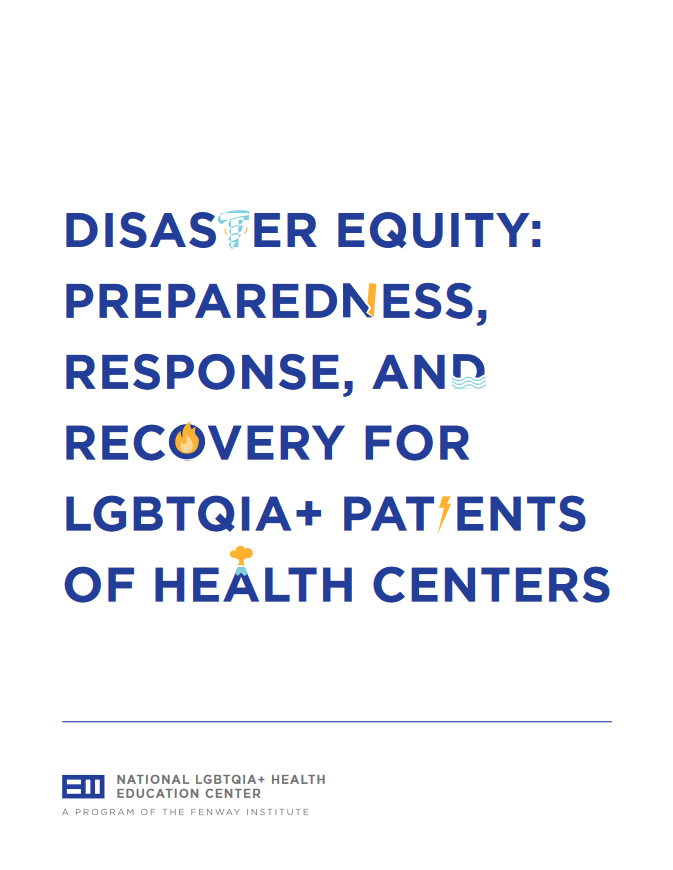LGBTQIA+ people exist in all communities and are incredibly diverse in terms of race, ethnicity, sexual orientation, gender identity, socioeconomic status, ability, etc. Importantly, LGBTQIA+ people are underrepresented in disaster and climate infrastructure and policies, yet are overrepresented in populations that are known to be the most impacted by natural disasters—such as those burdened with chronic illness, who are unhoused, or have limited access to healthcare.
Climate change and natural disasters pose substantial threats to communities, the effects of which are exacerbated by inequalities in vulnerable populations—particularly those with intersectional marginalized identities (e.g., LGBTQIA+ people who are Black, Indigenous, and/or have a disability) and are disproportionately affected by chronic disease. Thus, it is vital that health centers pay special attention to the marginalized communities who have been historically forgotten in emergency preparedness and response plans. Social determinants of health such as stigma, discrimination, violence, neighborhood characteristics, transportation, and a lack of recognition of families and relationships in institutional policies dramatically impact the effects of natural disasters on LGBTQIA+ people.
How can we ensure equity for LGBTQIA+ communities throughout the disaster management lifecycle, from prevention and mitigation to post-disaster? This publication will summarize the issues at hand and provide strategies for health centers to promote disaster management equity for LGBTQIA+ patients.


